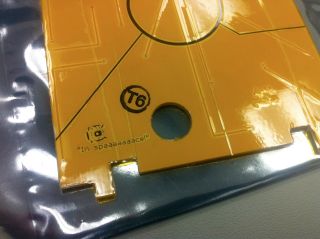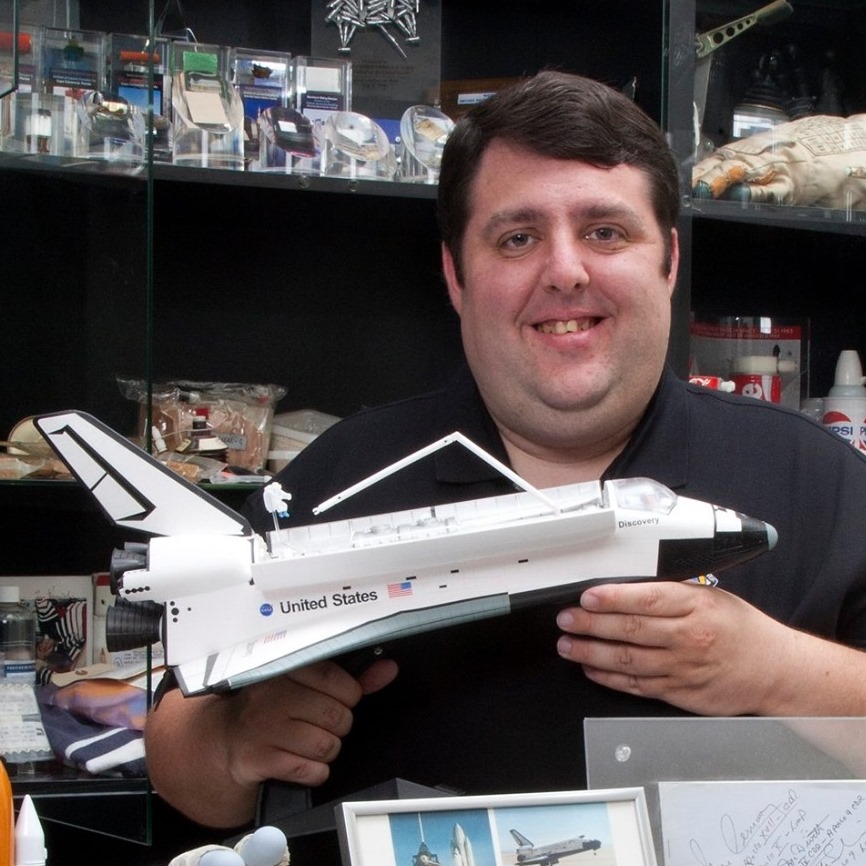'Portal 2' Space: Video Game Robot Launched Into 'Actual' Space

An American video game company has revealed there is an unauthorized stowaway on board the Japanese spacecraft now in Earth orbit on its way to the International Space Station (ISS).
"Wheatley," the orb-shaped robotic companion from Valve Software's 2011 popular game "Portal 2," is flying aboard the Japan Aerospace Exploration Agency's (JAXA) latest H-2 Transfer Vehicle, the HTV-3, which launched on Friday (July 20) to resupply the space station. The character, in miniature two-dimensional form, is soaring through real space thanks to an unnamed NASA worker.
Valve announced on its website's blog that "thanks to an anonymous tech at NASA, Wheatley is actually going to actual space."
The one-eyed sphere, or "personality core" as referred to in the video game, is given its voice by English actor and comedian Stephen Merchant. On board the HTV, which is nicknamed Kounotori or "white stork", the robot's voice is offered in the form of a phrase engraved under Wheatley's likeness — "In spaaaaaaace!"
(Portal 2 players may associate that quote with another of the game's personality cores, the so-called "Space Core," though Valve attributes it to Wheatley on their blog.)
Not officially endorsed
A photo posted on Valve's website shows what appears to be a circuit board with Wheatley's likeness laser-inscribed in one corner. The photograph offers no reference of scale for the component, nor from what instrument it may have originated. [9 Weird Things Launched on NASA Shuttles]
Get the Space.com Newsletter
Breaking space news, the latest updates on rocket launches, skywatching events and more!
NASA has several scientific experiments and payloads on the HTV-3, which astronauts will unpack after capturing the spacecraft using the space station's robotic arm and then attaching it to the outpost on Friday (July 27). Among the U.S. payloads are an Earth-observation camera, two small satellites, and a communications and navigation test bed.
The lack of details may be because the Wheatley etching is unofficial.
"And please note that when we mentioned an 'anonymous tech at NASA' we weren't kidding," Valve explained on its blog. "NASA in no way officially endorses secretly laser-engraving characters from Portal onto their spacecraft."
"Believe it or not," the software company continued, "they don't even officially endorse Portal 2, despite the fact that it's a really excellent game."
As a U.S. government agency, NASA cannot promote or endorse commercial products. It has partnered with other entertainment and game companies in the past, including Disney and Rovio, the latter makers of the "Angry Birds" mobile games, but those collaborations were to use their characters for educational outreach.
Portal to space
Portal 2 challenges the player to solve a series of puzzles using a "portal gun," that opens entrance- and exit-ways (portals) through walls and other flat planes. Wheatley, as the slow-witted companion, helps players as they navigate the game's futuristic setting.
While there are no portal guns on JAXA's Kounotori-3, there are 7,000 pounds (3,175 kilograms) of supplies and equipment for the station's Expedition 32 crew. In addition to the NASA experiments, JAXA's own payload includes an aquatic habitat for fish and a cooling water pump.
This is Japan's third resupply spacecraft launched to the International Space Station. After about a month attached to the complex, the HTV, re-loaded with trash, will leave the orbiting laboratory to re-enter into Earth's atmosphere and be destroyed.
Wheatley, however, will remain "in spaaaaaaace!"
Follow collectSPACE on Facebook and Twitter @collectSPACE and editor Robert Pearlman @robertpearlman. Copyright 2012 collectSPACE.com. All rights reserved.
Join our Space Forums to keep talking space on the latest missions, night sky and more! And if you have a news tip, correction or comment, let us know at: community@space.com.

Robert Pearlman is a space historian, journalist and the founder and editor of collectSPACE.com, an online publication and community devoted to space history with a particular focus on how and where space exploration intersects with pop culture. Pearlman is also a contributing writer for Space.com and co-author of "Space Stations: The Art, Science, and Reality of Working in Space” published by Smithsonian Books in 2018. He previously developed online content for the National Space Society and Apollo 11 moonwalker Buzz Aldrin, helped establish the space tourism company Space Adventures and currently serves on the History Committee of the American Astronautical Society, the advisory committee for The Mars Generation and leadership board of For All Moonkind. In 2009, he was inducted into the U.S. Space Camp Hall of Fame in Huntsville, Alabama. In 2021, he was honored by the American Astronautical Society with the Ordway Award for Sustained Excellence in Spaceflight History.

